
Duke Nukem 3D is a first-person shooter video game developed by 3D Realms. It is a sequel to the platform games Duke Nukem and Duke Nukem II, published by 3D Realms.

Rise of the Triad: Dark War is a first-person shooter video game, developed and published by Apogee Software in 1995. The player can choose one of five different characters to play as, each bearing unique attributes such as height, speed, and endurance. The game's story follows these five characters who have been sent to investigate a deadly cult, and soon become aware of a deadly plot to destroy a nearby city. Its remake was designed by Interceptor Entertainment and released by Apogee Games in 2013. The shareware version of the game is titled Rise of the Triad: The HUNT Begins.
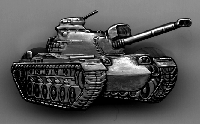
Scorched Earth is a shareware artillery video game. It was released for MS-DOS in 1991, originally written by Wendell Hicken using Borland C++ and Turbo Assembler. Players control tanks to do turn-based battle in two-dimensional terrain, adjusting the angle and power of each tank turret before each shot.

Blood is a 3D first-person shooter video game developed by Monolith Productions and published by GT Interactive and developed using Ken Silverman’s Build engine. The shareware version was released for MS-DOS on March 7, 1997, while the full version was later released on May 21 in North America, and June 20 in Europe.
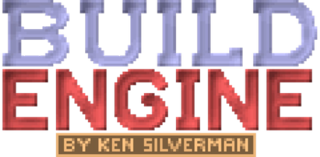
The Build Engine is a first-person shooter engine created by Ken Silverman, author of Ken's Labyrinth, for 3D Realms. Like the Doom engine, the Build Engine represents its world on a two-dimensional grid using closed 2D shapes called sectors, and uses simple flat objects called sprites to populate the world geometry with objects.

Shadow Warrior is a first-person shooter video game developed by 3D Realms and published by GT Interactive. The shareware version was released for the PC on May 13, 1997, while the full version was completed on August 25, 1997 and released in stores on September 16, 1997. Shadow Warrior was developed using Ken Silverman's Build engine and improved on 3D Realms' previous Build engine game, Duke Nukem 3D. Mark Adams ported Shadow Warrior to Mac OS in August 1997.

Crystal Caves is a side-scrolling platform game developed and published by Apogee Software for IBM PC compatibles. The game is divided into three episodes with the first distributed as shareware and the other two available for purchase. Designer Frank Maddin said the method worked "pretty well" for the time. Crystal Caves was inspired by the 1982 Atari 8-bit family game Miner 2049er.

Tyrian is a vertically scrolling shooter developed by Eclipse Software for MS-DOS and published in 1995 by Epic MegaGames. Tyrian was programmed by Jason Emery, illustrated by Daniel Cook, and its music composed by Alexander Brandon and Andras Molnar. The game was re-released as freeware in 2004. A free and open-source port of the game started in April 2007.
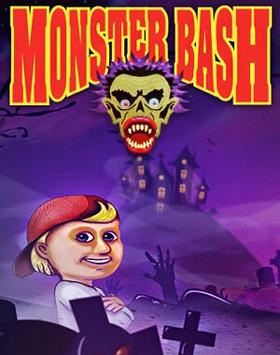
Monster Bash is a side-scrolling platform game developed and published by Apogee Software on 9 April 1993 for DOS. The game features 16-color EGA graphics and IMF AdLib compatible music. It was developed by Frank Maddin and Gerald Lindsly.
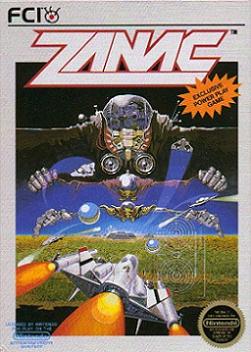
Zanac (ザナック) is a shoot 'em up video game developed by Compile and published in Japan by Pony Canyon and in North America by FCI. It was released for the MSX computer, the Family Computer Disk System, the Nintendo Entertainment System, and for the Virtual Console. It was reworked for the MSX2 computer as Zanac EX and for the PlayStation as Zanac X Zanac. Players fly a lone starfighter, dubbed the AFX-6502 Zanac, through twelve levels; their goal is to destroy the System—a part-organic, part-mechanical entity bent on destroying mankind.

Jets'n'Guns is a 2004 2D horizontally scrolling shooter for Microsoft Windows by Czech studio Rake in Grass. In April 2006, a version for Mac OS X was released. In December 2006 an expansion, Jets'n'Guns Gold, was released. A version for Linux has been developed by Linux Game Publishing. A sequel, Jets'n'Guns 2, was available in early access, and released on 25 July 2020.
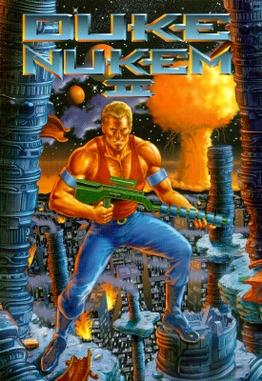
Duke Nukem II is a 1993 platform game developed and published by Apogee Software. The game consists of four episodes, the first available as shareware. It is the follow-up to 1991's Duke Nukem, and followed by Duke Nukem 3D in 1996. Todd Replogle was the primary designer of all three games.

Terminal Velocity is a shooter video game originally developed by Terminal Reality and published by 3D Realms for DOS and Windows 95, and MacSoft for Mac OS. It is an arcade-style flight combat game, with simpler game controls and physics than flight simulators. It is known for its fast, high-energy action sequences, compared to flight simulators of the time.

PowerSlave, known as Exhumed in Europe and 1999 AD: Resurrection of the Pharaoh in Japan, is a first-person shooter video game developed by Lobotomy Software and published by Playmates Interactive Entertainment in North America, and BMG Interactive in Europe and Japan. It was released in North America, Europe and Japan, for the Sega Saturn, PlayStation, and MS-DOS over the course of a year from late 1996 to late 1997. On May 24, 2015, Powerslave EX, an unofficial remake of the PlayStation version appeared on GitHub. The MS-DOS version of PowerSlave was added to the GOG store on November 19, 2020.

Bio Menace is a 1993 game developed and published by Apogee Software for MS-DOS. A 2D multidirectional scrolling platform game, it was built on a licensed version of id Software's Commander Keen game engine. Apart from the engine and music, all in-game content was created by the game's designer, Jim Norwood. In 2014, the game was re-released on Steam, and in 2015 on GOG.com with support for Microsoft Windows, macOS, and Linux.
Secret Agent is a side-scrolling platform game developed and published by Apogee Software. The first episode is shareware, while the remaining two are sold directly by the publisher. Secret Agent uses the same game engine as the earlier Crystal Caves.
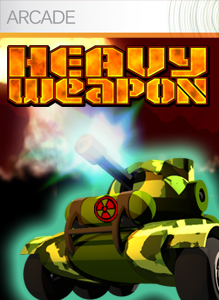
Heavy Weapon is a horizontally scrolling shooter developed and published by PopCap Games and released in 2005.

Dark Ages is a platform game written for MS-DOS, published by Apogee Software. It was the first shareware game to feature music for the AdLib sound card.

DemonStar is a video game developed by Mountain King Studios and published in 1998. Considered an unofficial sequel to the studio's earlier Raptor: Call of the Shadows, it is a top-down vertically scrolling shooter set in outer space.

Commander Keen in Goodbye, Galaxy is a two-part episodic side-scrolling platform video game developed by id Software and published by Apogee Software in 1991 for DOS. It consists of the fifth and sixth episodes of the Commander Keen series, though they are numbered as the fourth and fifth, as Commander Keen in Keen Dreams is not part of the main continuity. The game follows the titular Commander Keen, an eight-year-old child genius, as he first journeys through the Shadowlands to rescue the Gnosticenes so they may ask the Oracle how the Shikadi plan to destroy the galaxy, and then through the Shikadi's Armageddon Machine to stop them. The two episodes feature Keen running, jumping, and shooting through various levels while opposed by aliens, robots, and other hazards.




















